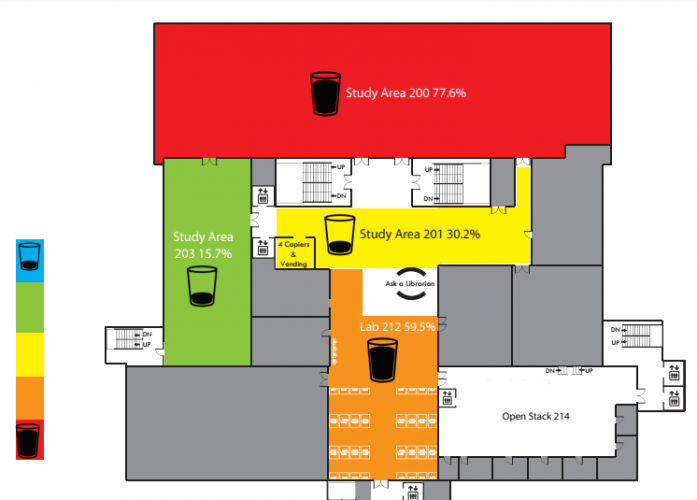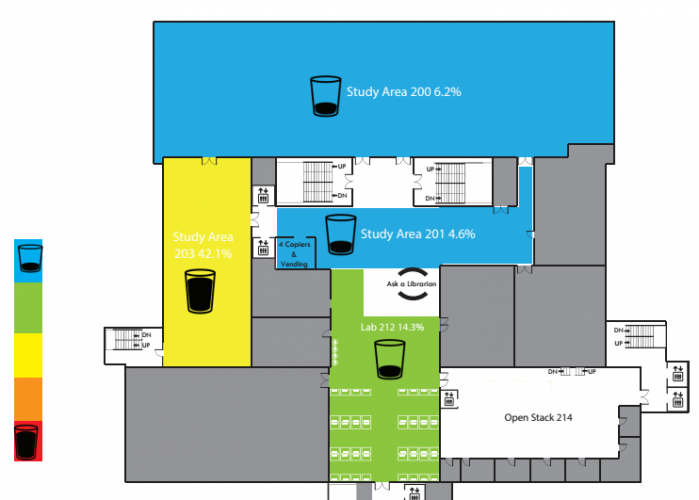Recently, I attended a workshop on Active Learning Classrooms. Active Learning Classrooms, or ALCs, are classrooms designed with the student in mind, with a focus on creating collaborative spaces for students and faculty to interact, share, create, and learn in a manner more personal and more effective than the impersonal lecture-style atmosphere. I was not the only one to attend this workshop. Many of the library department staff from Operations and for Learning and Teaching attended with me. This is just one example of the way that the library works hard to create environments that can serve as collaborative and creative spaces for the University of Michigan community at large.
This goal is central to everything that I do in my capacity as an Library Environments Support Team member-- from observing how many people use the book drop box as opposed to the returns desk to participating in studies on how full the library is during Winter in comparison to Summer, Spring, or Fall terms, to helping to create a workshop dedicated to having students envision their perfect “Library of the Future.” Everything I do, centers around delighting the students and faculty and creating environments conducive to sharing, learning, growing, and accessibility.

Winter 2017 Exam Time
% of seats filled from 11-3pm
Monday on the 2nd floor of Hatcher

July 17th - 23rd
% of seats filled from 12-4pm
Monday on the 2nd floor of Hatcher
These charts were created from observational data that shows how full the library is and what types of seats people are choosing to use. Utilizing this data, we can see areas that are consistently more full than other areas, we can notice which spaces people favor and when they favor them, and we can adjust that space to accommodate user needs. We can also use those trends to improve less populated spaces by adding different seating options or making other changes to the space. This is just one of the many facets that the library takes into consideration to better itself for the community at large. But, the library also likes to connect with students at an individual level too:

Model by students Elpis Wong and Judy Chu
This is a model made by University of Michigan students at a “Library of the Future” design challenge hosted by the library. It functions on the concept that the library is a great place to “meet” a book and that books could be built into the library infrastructure behind stairs and in walls in a way that promotes exploration and interaction with the academic community using the space and resources. Input from the University of Michigan community like this gives us an insight into how to improve our spaces and services. Collaborations and conversations with the community are integral to what we do.
I’ve learned a lot during my time with the library. I’ve learned how libraries utilize the data they collect, I’ve learned how important collaboration and conversation with the U-M community is to the way that the library functions. I’ve learned about all of the care, effort, and inquiry the library puts into making the library a space that is accessible, meaningful, and special for each and every person that walks through the door and that’s what makes working for the library such a positive and wonderful experience for me.